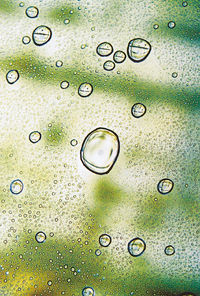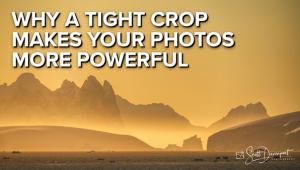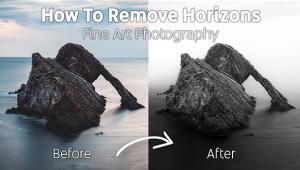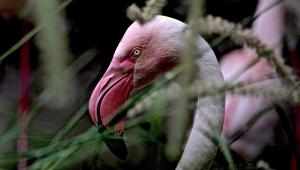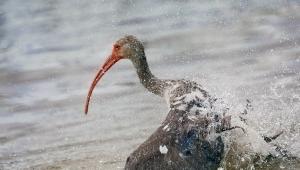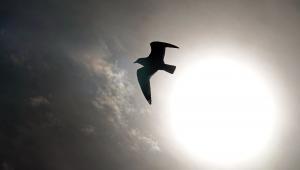Point & Shoot: Photographing Water
|
It seems that everywhere you look, you see nature photos that include water in its many forms, whether they're waves crashing on a rocky coastline, snow on a hillside, dewdrops on flower petals, or a simple ripple on a pond. For outdoor enthusiasts who enjoy taking pictures of water, the possibilities are seemingly endless. But for all the photo opportunities that water presents, there are many challenges you'll need to consider.
If you're going to be taking pictures around water, it's very important to protect your photo equipment. It's a good idea to have a waterproof camera case and plastic bag in which to put your point-and-shoot camera, especially in areas where there's a lot of spray. Carry plenty of lens-cleaning tissue or a soft cloth to wipe drops from the lens, and to dry your camera off. If you're water-skiing or scuba-diving, consider buying a waterproof single-use camera. When shooting pictures of waves breaking on a shore, you may want to freeze action, so set your camera on its sports mode for a fast shutter speed. If you're using a film-based camera, you'll get the best stop-action results with faster film in the ISO 400–1000 range. On the other hand, if you want to photograph moving water or a waterfall, you might want to use your landscape mode (or the shutter-priority mode if your camera has one) to give you a slower shutter speed for silky water effects. For this, film in the ISO 100–200 range works well. When using a slow shutter speed, however, put your camera on a tripod or another means of support to avoid blurred images. If your camera has a built-in zoom lens, you've got a lot of choices when framing your image. For example, you can use a moderate wide-angle setting to encompass most of the scene. If you're kayaking, you may want to include the boat you're in to give the viewer an idea of the activity in which you were participating. By using the telephoto setting on your lens, you can zoom in on interesting parts of the scene, like raindrops on flowers, or water rushing over a rock. Photos of ponds or lakes are especially successful when they're illuminated by late-afternoon or early-morning sunlight. If you're photographing a body of water at sunset or sunrise, try to find an interesting silhouette to include in your composition, such as a tree on the shoreline or a sailboat on the horizon. A low sun in the sky can serve as a reflection in the water. Look for framing elements, such as tree branches that surround a lake. This will provide a feeling of depth to a two-dimensional scene. Whenever possible, try to shoot down on a lake or pond from elevated ground. Frozen water presents some unique photo opportunities. Very early on a fall or winter morning, you may find colorful leaves or fruit covered by frost. When water drips from branches or window overhangs and begins to freeze, icicles form. Icicles are great subjects by themselves, but when backlit by the sun, they seem to have an inner glow. Ice deposits on windows sometimes have a crystalline appearance, and look like intricate feathers or ferns on glass. Not all your pictures need to encompass an entire lake or expanse of ocean. Water offers great potential for imaginative close-ups, such as dew or raindrops on foliage, or small aquatic plants. Dewdrops on spiders' webs are very dramatic, especially after a light rain, or on a misty morning. Such dewdrops look like an array of gems on the intricate webs that spiders create. For these photos, simply use your camera's close-up mode (symbolized by a flower). Check your camera's manual for guidelines on how close to a subject your camera will focus. Since water covers over 70% of the earth's surface, there's plenty of opportunities for you to take great photos! I hope the tips outlined here will help you begin to capture the magic of water with your camera. |
- Log in or register to post comments




